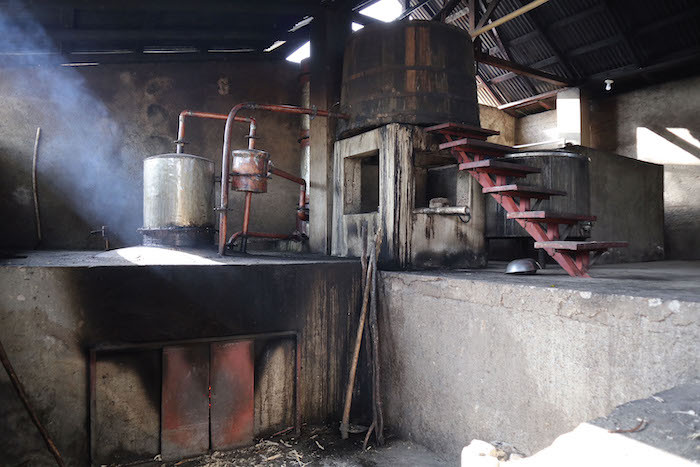
Laura Foster looks into the history and flavour profile of the internationallly littleknown “grandfather” of rum.
Today, dear reader, we travel to the Caribbean – Haiti specifically – to the home of clairin, a sugarcane spirit that has withstood the march of industrialisation that other rum producing countries in the region underwent. “It’s the only [Caribbean rum] that never evolved into something more modern and wasn’t influenced by Europeans,” explains Daniele Biondi of La Maison & Velier, which owns the clairin importer Spirit of Haiti. “So today, what I say is [it is] the grandfather of all the rums – jumping back a couple of centuries, all rum was made like clairin.”
The Haitian revolution, which took place between 1791 and 1804, is the reason clairin escaped modernisation – Haitian slaves defeated their colonisers, and the country escaped the European industrialised techniques that other islands adopted.
“When I visited Haiti it was like going back in time to how rum and cane spirits were produced hundreds of years ago – there wasn’t much high technology involved,” explains global rum ambassador Ian Burrell. “It was raw rum. It’s important to preserve these products, because they’re a link to the past.
“‘Agricultural’ is a way of describing clairin. They’re local, and they’d be using local sugarcane, natural fermentation, single distillation in a small still. The producers are mostly small and rural. There’s a couple of companies inside Port au Prince where they’d use a more industrial style with bigger machines resulting in spirits that are a lot lighter.”
The sugarcane used is organic, because fertilisers and pesticides weren’t introduced to the country. “It’s a triumph of biodiversity – there are dozens and dozens of sugarcane varieties rather than just a few in the whole rest of the [Caribbean],” says Biondi.
Once the cane has been crushed, fermentation takes place spontaneously with wild yeast, and then the resulting liquid is distilled just once. “[The sugarcane] never sees a drop of water to dilute the juice – it’s very rich of sugar,” Biondi continues. “Also, at the end of the process, after distillation, they don’t dilute with water. So this really is the spirit of the [sugarcane] juice with no water, zero influence by chemistry, zero influence by humans. They basically cut the cane and squeeze and ferment, distil and drink. I think this is the most terroir-driven spirit ever.”
‘Clairin’ is the Creole word for ‘clear’, and is a nod to the fact that this spirit is usually unaged, although some limited-edition aged clairins have been introduced by Spirit of Haiti.
What’s out there?
An agricultural product that’s not changed production methods much in at least the past 200 years is hardly set up to be produced and sold on a multinational level. However, there are a couple of companies that UK bartenders can explore relatively easily.

The first is Spirit of Haiti, an export company that works with different clairin producers and is distributed by Speciality Brands. For those looking for consistency of flavour, Clairin Communal (43% abv), a blended product, is the one to explore. Flavours of grassy sugarcane, lime zest, anise and black pepper mingle with a distinctive banana backbone accompanied by banoffee pie and dark chocolate shavings.
Spirit of Haiti’s main focus is a range of single estate products, with five currently available. Highlights include Vaval (48.8% abv), an expressive clairin of tropical mango and pineapple with mint, anise, wood shavings and an oily mouthfeel; and Le Rocher (46.5% abv), a warm, accessible spirit with white peach, Fruit Salad penny sweets, crepes suzette, sea salt and ripe banana.
If you like a charitable angle to the products on your back bar, look no further than Saint Benevolence (50% abv), a brand that works closely with non-profit organisations to improve the quality of life for Haitians through medical services and educational programmes. Fruity grapefruit, mango and unripe banana mix with more savoury green capsicum, gherkin and a distinct barbecue smoke.
How to use it?
Burrell thinks there is education to be carried out to drive awareness and adoption of this category: “To introduce people to clairin, I advise bartenders to do blind tastings with different types of clairin, and also have some agricoles and unaged cane juice so that there are some reference points of unaged rums made from cane juice. Do it blind so there’s no pre-judgement, get them to describe the different flavour profiles and then reveal what they’re tasting.”
As for simply drinking it, he advises to “try it neat, in a cocktail, definitely with citrus, depending on your palate preference. A Ti’ Punch is a popular way. Use it in a similar way to how you would use rhum agricole”. So take a step back in time and dive into this expressive, delicious category.


